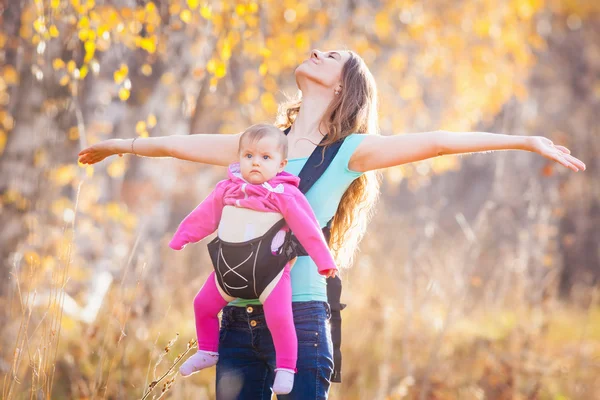Choosing a baby carrier is one of the most personal decisions a parent can make. With so many options on the market, it’s important to find a carrier that meets both your lifestyle needs and your baby’s comfort. Here, we’ll explore the various types of baby carriers available, their unique features, and tips to help you find the right one for you.
1. Types of Baby Carriers
Wraps: These long pieces of fabric can be wrapped and tied in various ways to securely hold your baby against your body. They provide a snug fit and can be adjusted as your baby grows.
- Pros: Excellent for newborns, customizable fit, and often made from soft materials.
- Cons: Can be tricky to tie and may take some practice to master.
Slings: Typically made from a single piece of fabric, slings are easy to use and can be worn in various positions. They’re particularly popular for quick trips or for newborns who want to be close to their parent.
- Pros: Simple to use, great for breastfeeding on the go, and easily adjustable.
- Cons: Not always supportive for older babies or toddlers, and the single-shoulder design can become uncomfortable over time.
Soft Structured Carriers (SSC): These carriers feature padded shoulder straps and a structured body that provides support and comfort for both the parent and baby. They often have multiple carrying positions.
- Pros: Easy to put on and adjust, great for longer wear, and offers good back support.
- Cons: Can be bulkier and may require additional accessories for newborns.
Mei Tais: A traditional Asian carrier that combines features of both wraps and SSCs, mei tais have a rectangular body panel with straps that tie around your waist and shoulders.
- Pros: Versatile, can be worn on the front or back, and offers great weight distribution.
- Cons: Requires some practice to tie properly, and may not be as quick to use as an SSC.
2. Choosing the Right Carrier for Your Needs
When selecting a baby carrier, consider your lifestyle, your baby’s age, and how often you plan to use it.
- For Newborns: Look for carriers that provide extra support for tiny bodies. Wraps and slings are often ideal for this stage, as they can create a cozy environment.
- For Active Parents: If you plan to hike or be on the go, an SSC or a mei tai with a structured design may be best. These options typically offer better support for longer periods and uneven terrains.
- For Quick Trips: Slings and wraps can be great for quick errands or outings, allowing you to pop your baby in and out with ease.
- For Comfort: If back support is a priority, choose an SSC with wide, padded straps and a supportive waistband to help distribute weight evenly.
3. Top Baby Carrier Recommendations
Here are some popular options that cater to different needs and preferences:
- Boba Wrap: This stretchy wrap is perfect for newborns and provides a snug, comforting fit. It’s easy to adjust and comes in various colors and patterns.
- Ergobaby Omni 360: This versatile SSC allows for multiple carrying positions and has a lumbar support feature for added comfort. It’s suitable for infants to toddlers, making it a long-lasting investment.
- Moby Sling: Known for its simplicity, the Moby Sling is a great choice for parents who want a quick and easy option. Its soft fabric makes it comfortable for both parent and baby.
- Tula Free-to-Grow: This soft structured carrier grows with your baby and offers a unique design that allows for front, back, and hip carries. It’s praised for its comfort and ease of use.
- Lillebaby Complete: With six carrying positions and excellent lumbar support, this SSC is a favorite among parents looking for versatility and comfort for long periods.
4. Safety Tips for Using Baby Carriers
Regardless of the type of carrier you choose, safety is paramount. Here are some tips to ensure safe usage:
- Ensure Proper Positioning: Your baby should always be in an ergonomic position that supports their hips and spine. The “M” position (knees higher than the bottom) is recommended for healthy hip development.
- Check for Adequate Support: Make sure your baby’s head is supported, especially for younger infants. Use additional padding or neck support if necessary.
- Monitor Temperature: Babies can get hot quickly, so check for overheating, especially in warm weather. Use breathable fabrics and dress your baby appropriately.
- Practice Getting the Fit Right: Spend some time getting used to your carrier before heading out. Adjust straps and check that your baby is secure and comfortable.
Finding the right baby carrier can enhance your parenting experience by keeping your little one close while allowing you to be hands-free. Consider your lifestyle, your baby’s needs, and the unique features of each carrier to make an informed decision.
With the right carrier, you’ll enjoy countless adventures and bonding moments with your baby, all while ensuring they’re comfortable and secure. So, take your time, try out different options, and find the perfect carrier that fits your family’s needs!

